Longtime readers and friends might know that I have an obsession professional interest in studying 1860s mourning clothing. I first presented on the topic at the millinery symposium at Colonial Williamsburg in 2014, and have been continuing my research in my "spare" time. I was thrilled when I was asked to present again at The Mariners' Museum's Civil War Event, Battle of Hampton Roads in March. Along with giving my lecture, I set up an interpretive display of mourning items I've made or collected over the past year or so.
One of my main motivations in studying and interpreting 1860s mourning is that there are a lot of misconceptions about the topic. Some of the most prevalent are that every black dress/bonnet/veil/brooch/cap/etc was for mourning, and that all women were absolutely required to follow prescribed mourning customs and did so regardless of their circumstances. What I've discovered in my research is that process of mourning and the clothing or accessories worn for mourning were actually deeply personal, and the extent to which a woman followed mourning customs was greatly informed by her economic situation, the community she lived in, and her personal beliefs and feelings. I'm hoping to write an article on my research in the not-too-distant future, so I won't go into much more than that in this post, although I'm happy to answer any questions you might have. I've chosen to focus my area of study on the years 1850-1869 because practices and fashions change quite a bit throughout the century, and I don't believe in lumping them all in under "Victorian mourning."
My display was made up of original cartes de visite of women in full mourning, including a few widows identified by their widows caps; reproduction full mourning bonnet, veil, and collar; an original hair brooch with the name and death date of the deceased; mourning pins from At the Eastern Door; Lincoln mourning cockades; reproduction jewelry from The Victorian Needle; an original mourning envelope; a reproduction belt buckle from Aldridge Clothiers; printed cotton fabric suitable for half mourning (which I started a dress from); and a reproduction half mourning bonnet.
Full mourning bonnet covered in crape. Fiddly to work with, but well worth the effort to get something that's "right"!
Almost the whole display.
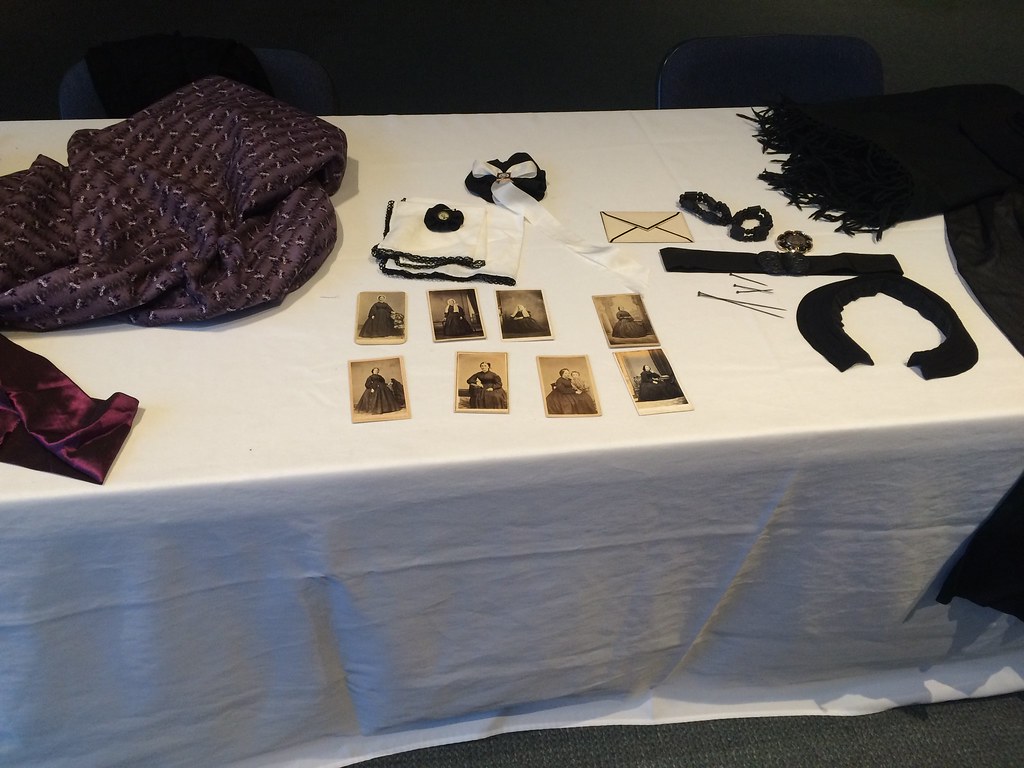
The light mourning side of the table:

The full mourning side of the table. Forgot I had a shawl in there too!

Crape full mourning collar with original hair brooch and repro buckle in the background.
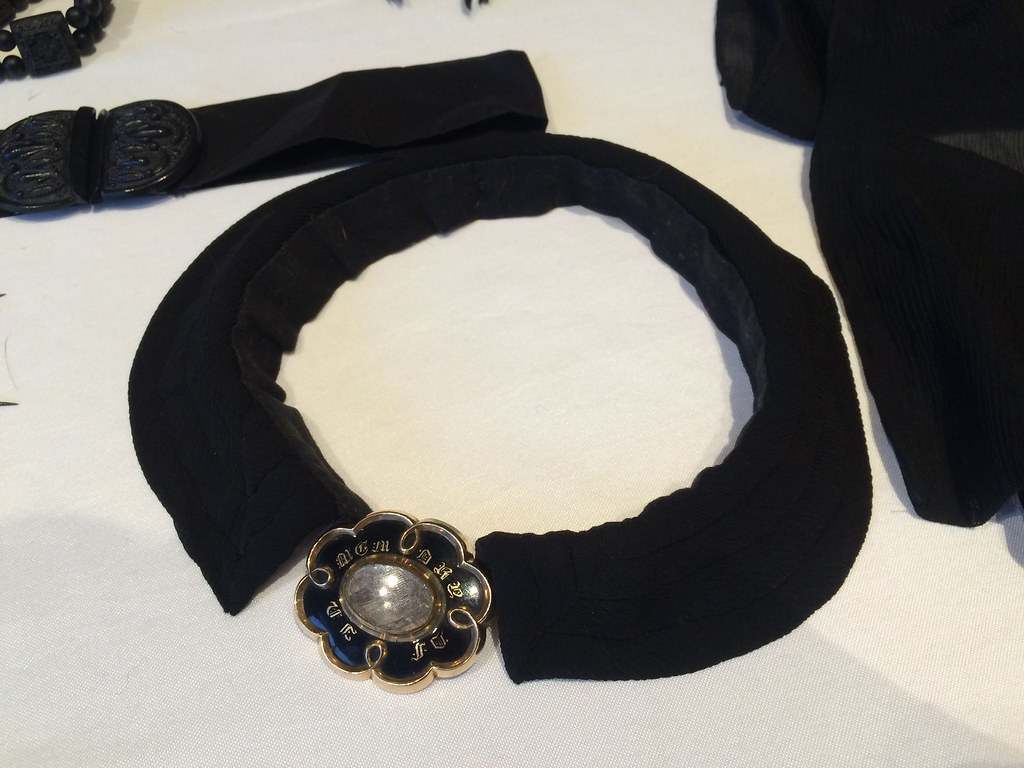
Reproduction Lincoln mourning cockade made from crape and silk ribbon. Original mourning envelope.
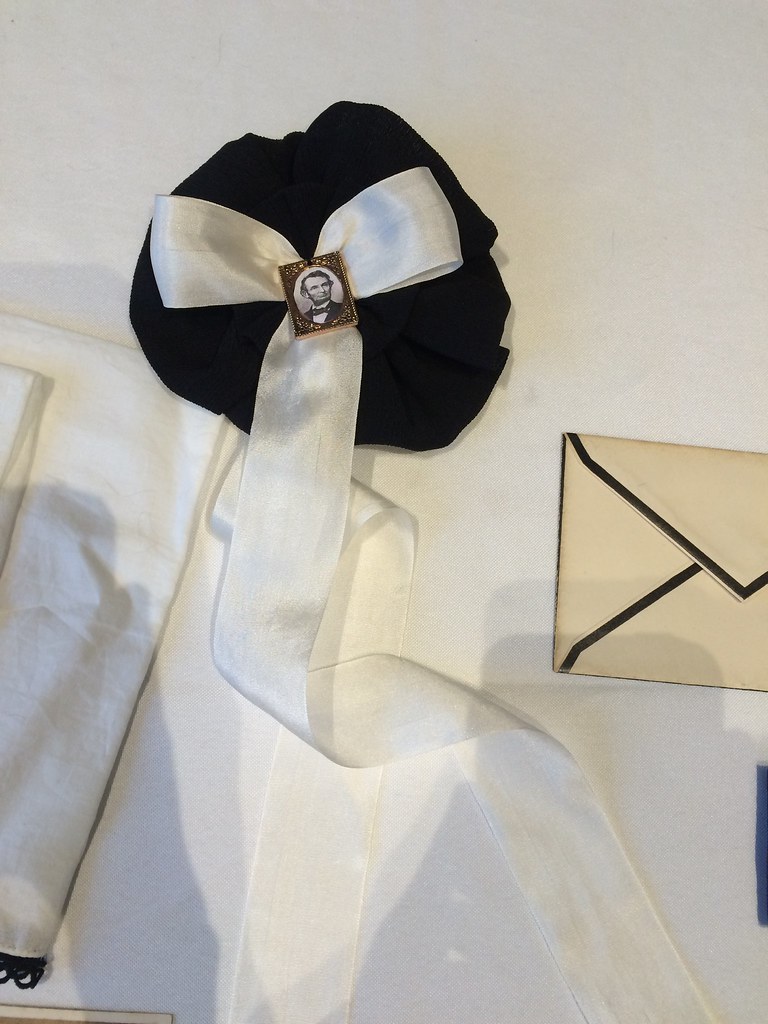
My original hair brooch.
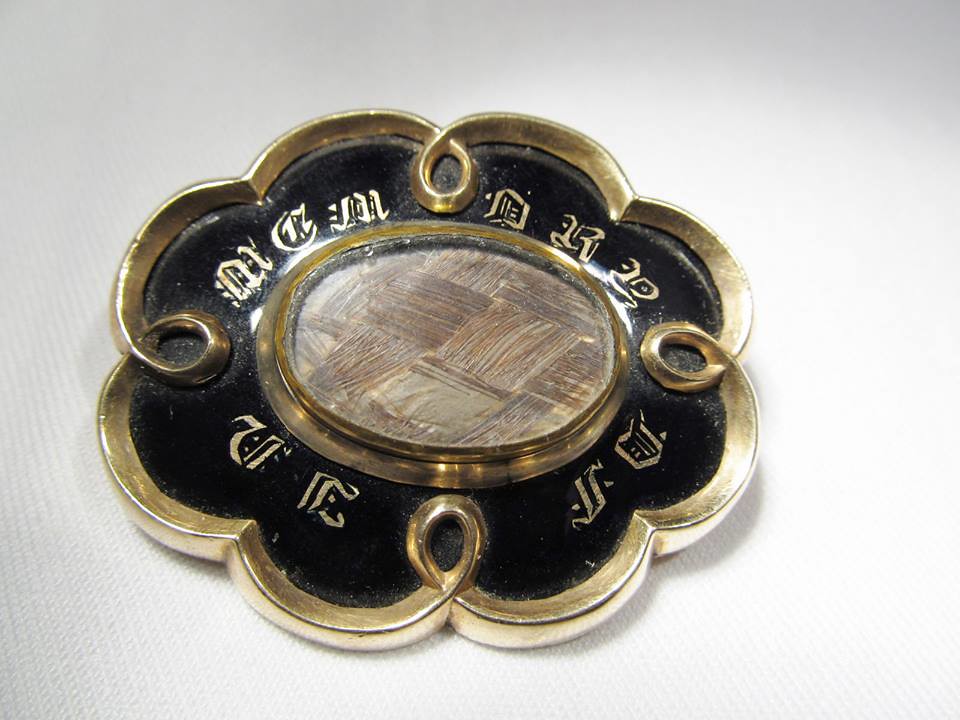
The back is engraved, "Jessie Ewart died 22nd May 1863."

I had hoped to finish the half mourning cotton dress AND make a new full mourning dress, but I ended up devoting my time to making a new cage crinoline, petticoat, and reworking my half mourning silk dress. My hope for the next time I can set up this display is to have both of those dresses finished and available to be displayed.
I had some excellent discussions with visitors, but the most interesting conversations were those I had with small children. At first I wasn't sure how I was going to talk to small children about death. Would their parents be offended? How much would a small child (say, under 10 or even under 5) really understand about death? So I turned the conversation to "How do we remember people?" and "What things do you do when you're sad or miss someone?". That ended up being the ticket, and my little visitors responded well. I'm really looking forward to setting up this display again and hope that I can do so sooner than later!
Along with having my mourning display set up, my friends had a display set up for a women's sanitary fair and were engaged in reproducing a flag in the collection of the Mariners' Museum. I was able to put a few stitches into it, and although we didn't complete the flag, we were still able to present it to Mr. Lincoln on Sunday afternoon. Chelsea, who came to help stitch the flag, was gracious enough to share some of the pictures she and her husband took during the weekend.
Busy stitching!
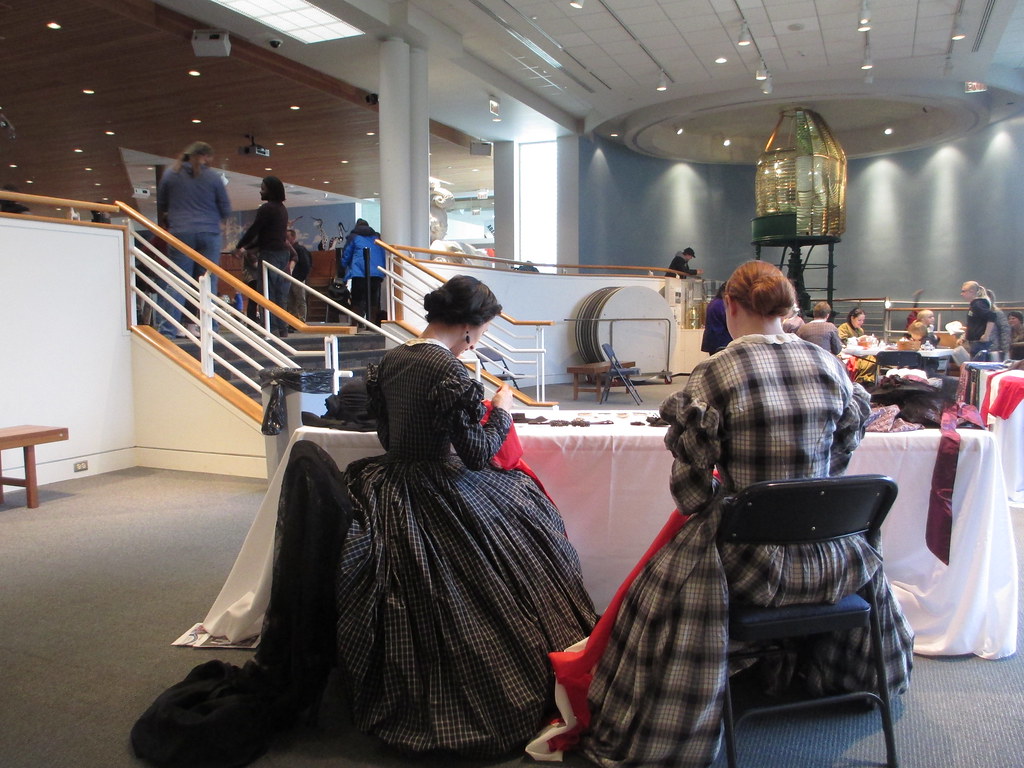
Chelsea and I were sleeve sisters!
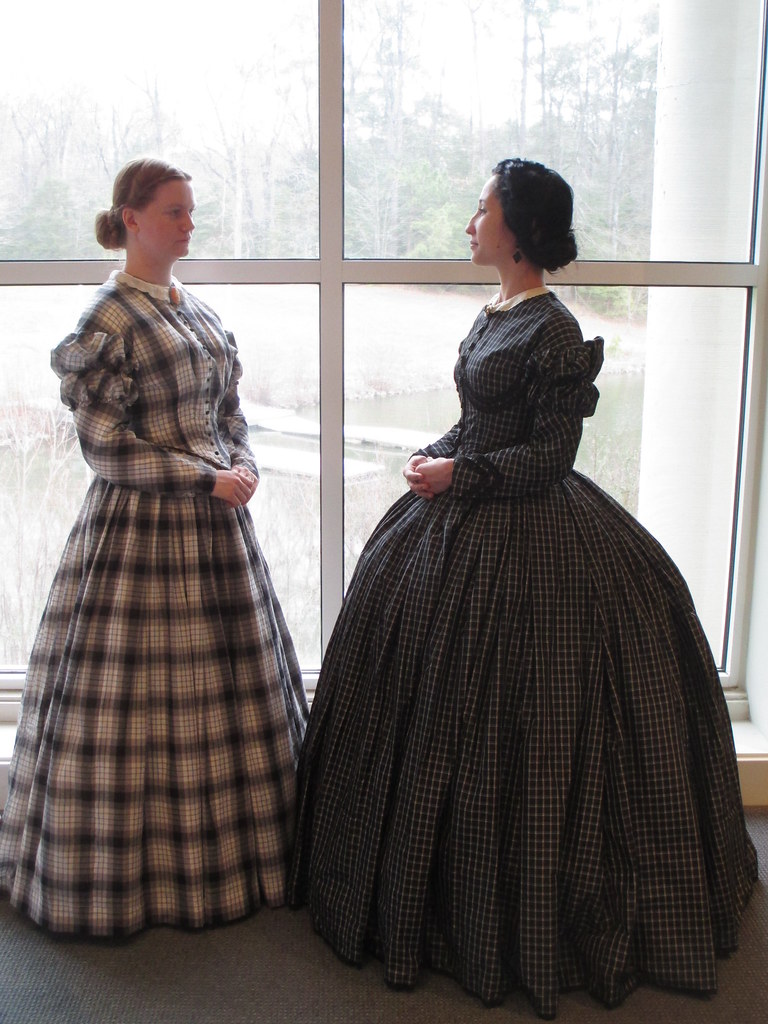
Fixing and fluffing is very important.
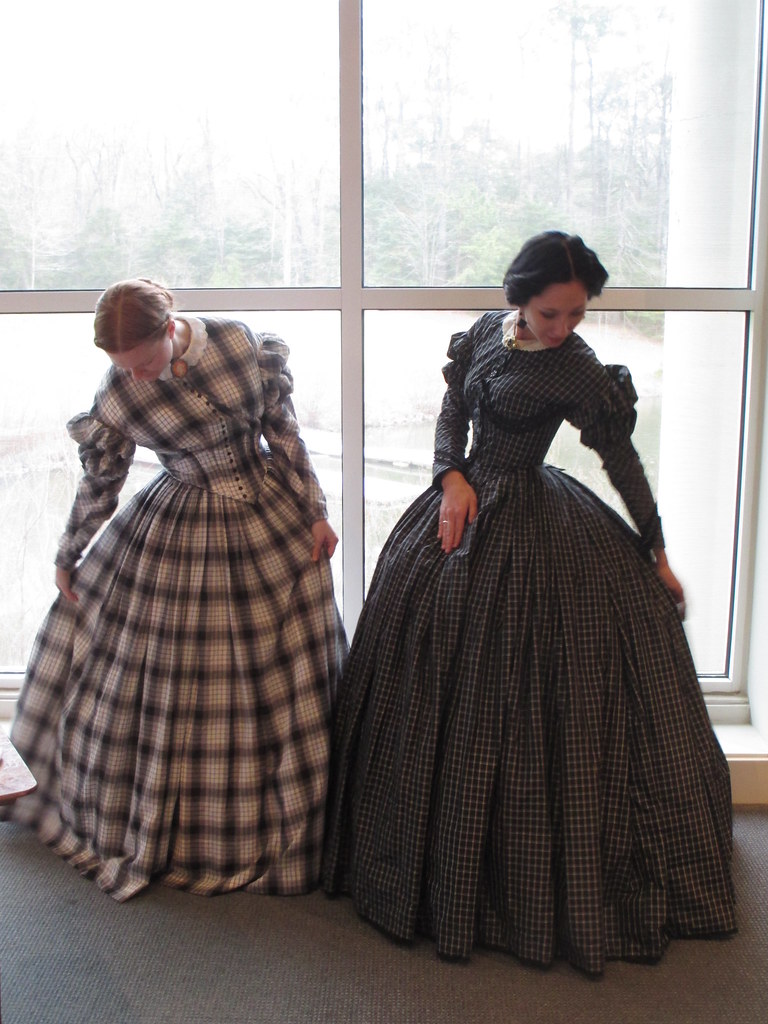
Presenting the flag to Mr. Lincoln.
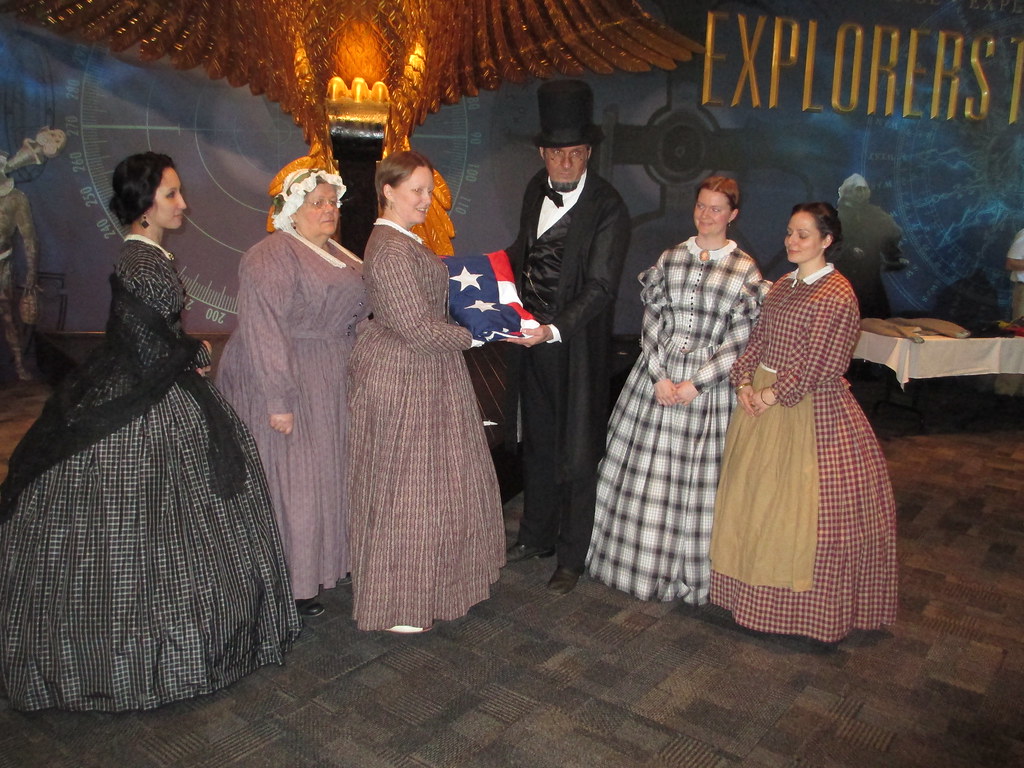

5 comments:
I, too, am very interested in 1860s period mourning and look forward to seeing your latest research.
SUCH an excellent point about talking with kids about some of the more difficult historical subjects we come across. I find I often let kids lead the discussion (they ask the questions they're comfortable with), and I love your questions for opening the conversation.
NICE BLOG.
I started on COPD Herbal treatment from Ultimate Life Clinic, the treatment worked incredibly for my lungs condition. I used the herbal treatment for almost 4 months, it reversed my COPD. My severe shortness of breath, dry cough, chest tightness gradually disappeared. Reach Ultimate Life Clinic via their WEBSITE www.ultimatelifeclinic.com . I can breath much better and It feels comfortable!
Good morning. I Love the crape covered bonnet and will be setting off to create one myself. I have a question though - would it be possible to see what the inside of the bonnet looks like? Thanks! Becky
Post a Comment